
views
Angelshark
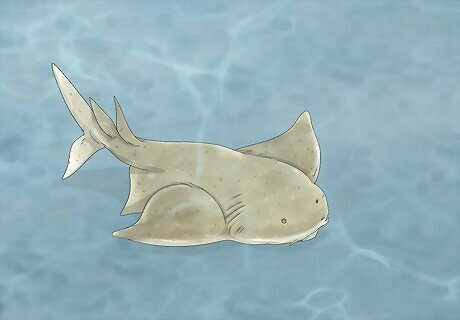
This strange shark looks more like a shark-shaped pancake. That’s because angelsharks have very flat bodies—almost like a cross between a shark and a ray! They have large fins that fan out on both sides, with smaller dorsal fins on their tail. Angelsharks are ambush predators, so being flat is quite beneficial; they lie in wait, buried in sand at the sea bottom, for prey to swim by. Latin name: Squatina squatina Lives in: The Mediterranean Sea and eastern Atlantic ocean
Barreleye Fish
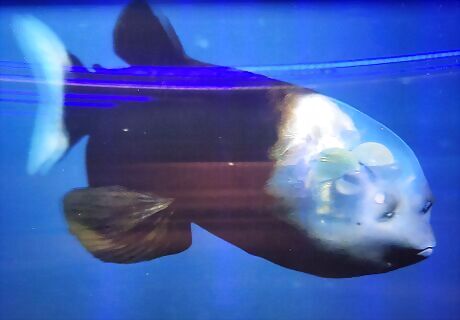
Barreleye fish have distinct see-through foreheads and rotating eyes. Its eyes are tubular (thus the name “barreleye”), and because they rotate, the fish can look directly up through its see-through forehead to detect nearby predators (or oncoming prey). Handy, right? Its distinctive eyes also have a yellow pigment that helps distinguish bioluminescence from sunlight! Latin name: Macropinna microstoma Lives in: The Bering Sea and North Pacific Ocean
Black Swallower
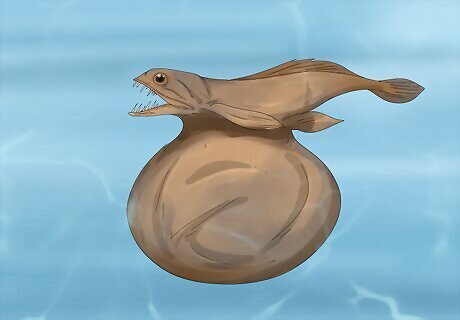
Black swallower fish have large mouths and expandable stomachs. Using their considerable mouth and jaws, they can swallow prey up to 4 times their size and 10 times their weight! These fish can even retract their teeth so prey can swim into their mouths. However, it’s rare to see a black swallower in the wild, since they live so deep in the ocean—usually between 700 to 3,000 meters, or 2,300 to 10,000 ft. Latin name: Chiasmodon niger Lives in: Temperate and tropical waters of the Atlantic
Bloodybelly Comb Jelly
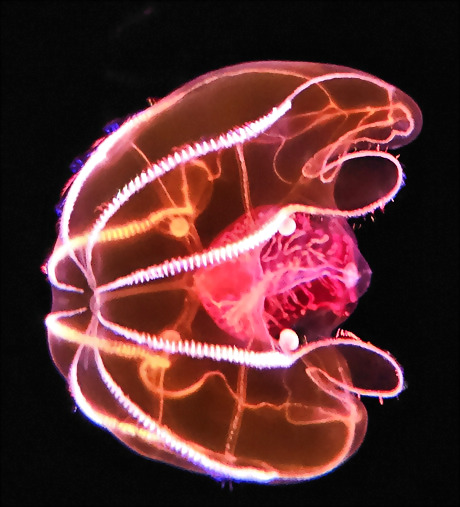
This vibrant jellyfish is named for its bright scarlet stomach. Interestingly, the jelly’s stomach is intended to help it camouflage in its dark surroundings since red light gets absorbed and looks black in the deep ocean waters where the jelly lives. Bloodybelly comb jellies also have tiny filaments that propel them through the water—and when light bounces off them, it looks like the jelly is shining! Latin name: Lampocteis cruentiventer Lives in: The deep waters of the North Pacific Ocean
Bobbit Worm
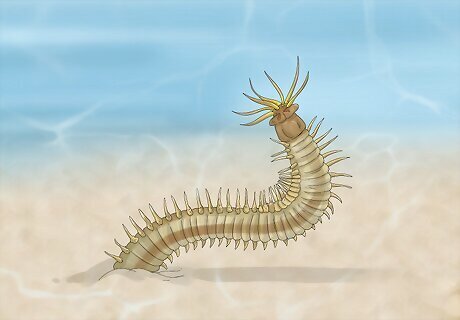
Bobbit worms have an unnerving look and predatory traits to match. They bury themselves in sand and sediment, leaving only their tentacles exposed, waiting for prey to pass by so they can strike. Their sensory appendages detect nearby prey, and when ready, the bobbit worm can spring from the sand close its jaws around the unfortunate victim. Moreover, bobbit worms can grow up to 10 ft (3 m) long! Latin name: Eunice aphroditois Lives in: Prey-rich coral reefs in the Atlantic and Indo-Pacific Oceans
Brier Shark

Brier sharks are also known as “birdbeak dogfish.” The latter name is definitely accurate, at least based on appearance! The brier shark has a long nose, wide eyes, and a slender gray-brown body; at lengths of up to 3.9 ft (1.2 m), it may look more like a fish than a shark. They’re found mainly off the southern coast of Australia and are sometimes caught for flesh and liver oil. Latin name: Deania calcea Lives in: The Pacific Ocean and Atlantic Ocean, from Iceland to the Cape of Good Hope
Cockeyed Squid
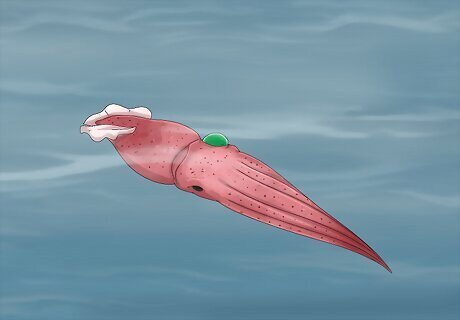
This strange squid is known for its lopsided eyes. True to name, the cockeyed squid’s eyes vary in size and structure, with its left eye gradually growing to over twice the size of its right. The left eye’s lens also turns yellow, and the eye becomes semi-tubular; it faces upward (and can spot prey despite the natural light coming in), while the right faces down (and can spot bioluminescent creatures). Latin name: Histioteuthis heteropsis Lives in: The Pacific Ocean, within the California Current and Humboldt Current
Cookiecutter Shark
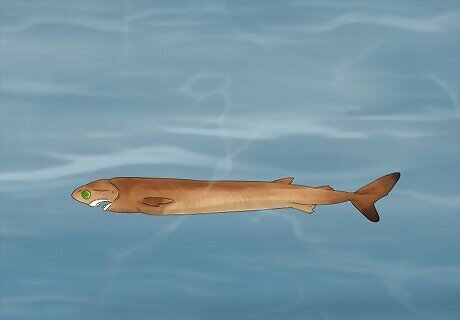
The small cookiecutter shark attacks prey with serrated bottom teeth. It uses those teeth to latch onto prey (even prey larger than itself) and bite off pieces—despite the shark’s relatively tiny size, which is usually between 16.5 in (42 cm) and 22 in (56 cm). These sharks usually stay in deep water during the day, then swim up to hunt in the surface waters at night. Latin name: Isistius brasiliensis Lives in: Warm, oceanic waters worldwide
Costasiella Sea Slug
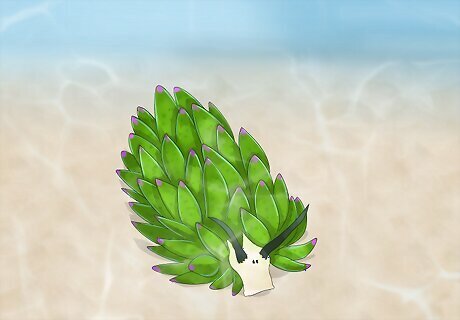
This colorful sea slug is also called the “leaf sheep.” Costasiella sea slugs are a type of mollusk; they’re green, with leaf-like appendages sprouting from their bodies. They spend most of their time grazing on algae—and, amazingly, they can perform a type of photosynthesis by separating chloroplasts within the algae and embedding them in their own tissues. Latin name: Costasiella kuroshimae Lives in: Tropical waters near Japan, the Philippines, and Indonesia
Deep-sea Lizardfish
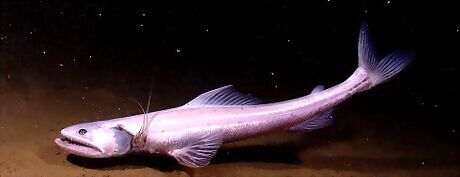
The deep-sea lizardfish is one of the ocean’s superpredators. That means it’ll eat anything it comes across, even other members of its species—and it’s the deepest-dwelling superpredator in the world. This bizarre-looking critter lies in wait at the bottom of the ocean so it can catch prey swimming overhead—and its eyes are sensitive to detect bioluminescence. Latin name: Bathysaurus ferox Lives in: Tropical and subtropical seas worldwide (on the deep ocean floor)
Doto Greenamyeri Nudibranch

The doto greenamyeri is an unusual-looking sea slug. The rings of its colorful protuberances are sometimes compared to honey-drizzlers—or a stack of pancakes! Doto greenamyeri sea slugs only grow to about 15 mm (0.5 in) long, but they make up for their small size with chemical defenses. The protuberances on its body—or “cerata”—are toxic to predators and function as gills. Latin name: Doto greenamyeri Lives in: Indo-Pacific waters around Indonesia and Papua New Guinea
Dragonfish

Female dragonfish are particularly fearsome, with long, translucent fangs. Those fangs are also embedded with nanocrystals, giving female dragonfish a more substantial bite than some sharks! They also have a luminous barbel to attract prey (like anglerfish), although these barbel hang from their chins. Male and female dragonfish both have photophores, light-producing organs that can signal other dragonfish. Latin name: Stomiidae Lives in: Oceans worldwide, in the twilight and midnight zones
Dumbo Octopus
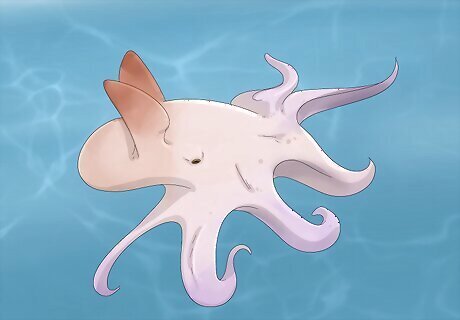
Dumbo octopi are named after the iconic Disney elephant. Dumbo octopi are so-named because they have large, ear-like fins that help them move around. They live in the ocean's deep waters; one submersible even captured one on film in the Java Trench, almost 7 kilometers deep—the deepest on record for cephalopods. Latin name: Grimpoteuthis Lives in: Deep sea waters worldwide
Emperor Shrimp
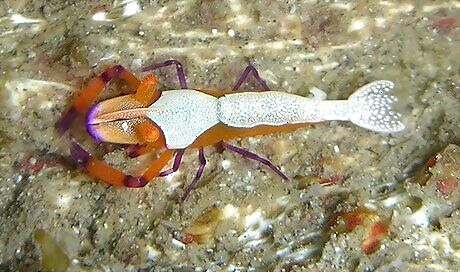
Emperor shrimp are colorful creatures that live symbiotically on others. The relationship between the emperor shrimp and its host is mutually beneficial: the host (usually a mollusk, such as a sea slug) gives the emperor shrimp protection and a free ride, while the emperor shrimp cleans its host. Emperor shrimp typically have orange sides and a white back, with shades of red, orange, and purple on their legs. Latin name: Periclimenes imperator Lives in: Tropical Indo-Pacific waters
Flapjack Octopus
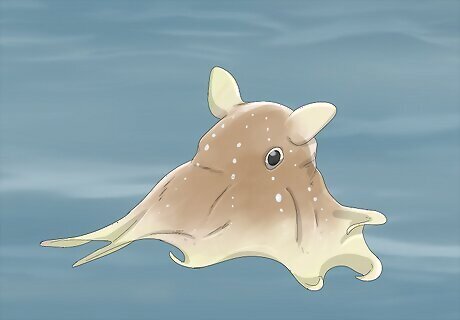
The flapjack octopus has large eyes, short arms, and ear-like fins. As odd as it looks, some might consider the flapjack octopus pretty cute! Flapjack octopi often lie flat on the seafloor (like a pancake, or “flapjack”) but can swim or hover using their arms and fins. They’re a species of shallow-water octopus—but, unlike most species, they can’t change color and don’t have an ink sac. Latin name: Opisthoteuthis californiana Lives in: Shallow waters off the coast of the northern Pacific Ocean
Frilled Shark
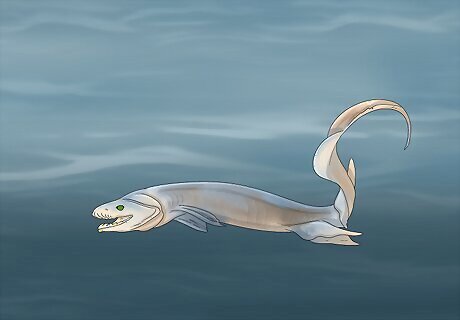
The frilled shark is named for the frilly look of its gills. It’s a deep-sea shark with a long body and a large, flat head. Its prey includes fish and other sharks, which it will attack with the multiple rows of three-pointed teeth in its mouth. Although these sharks have an unusual appearance, they grow fairly large, reaching up to 6.6 ft (2 m) long. Latin name: Chlamydoselachus anguineus Lives in: Oceans worldwide
Giant Isopod
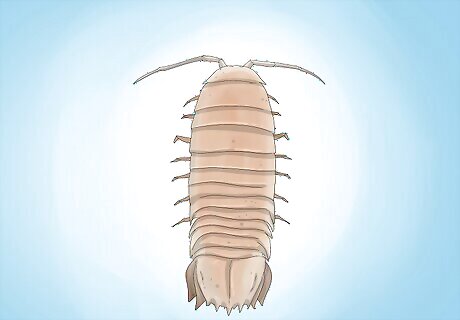
Giant isopods look like pale, enlarged pill bugs (woodlice). Their appearance can be quite alarming, particularly since they can grow to nearly 20 inches (50 cm) long—which is much larger than a run-of-the-mill woodlouse. However, giant isopods live in very deep waters, so they’re rarely seen. They typically live at least 500 meters (1,640 ft) deep! Latin name: Bathynomus giganteus Lives in: Cold waters in the Atlantic, Pacific, and Indian Oceans
Giant Larvacean
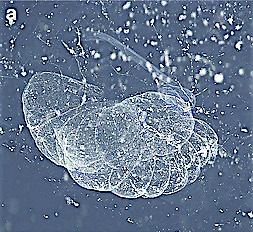
Giant larvaceans create slimy mucus structures to catch food. These mucus structures are way bigger than the larvaceans, reaching up to 3 ft (1 m) across compared to the larvacean’s 4 in (10 cm) length. So, while the name “giant larvacean” might not seem all that accurate, this creature’s abilities are definitely interesting—and when discarded, its mucus sinks to the bottom of the ocean, providing food for other creatures. Latin name: Bathochordaeus Lives in: Oceans worldwide, including the North and South Pacific, North and South Atlantic, and Indian Oceans
Giant Siphonophore
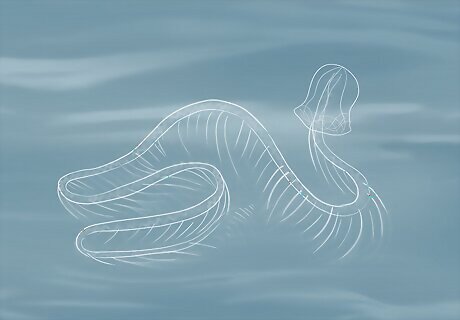
The incredible giant siphonophore can reach up to 160 ft (50 m) long. That makes it the second-longest sea organism (after the bootlace worm), and it’s close in length to the largest sea mammal, the blue whale. Furthermore, the siphonophore is actually a colony comprised of tiny, individual zooids, each with a specific function within the siphonophore—from stinging and catching food to digesting it. Latin name: Praya dubia Lives in: Off the coast of areas worldwide, from Iceland (Atlantic) to Chile (South Pacific)
Goblin Shark
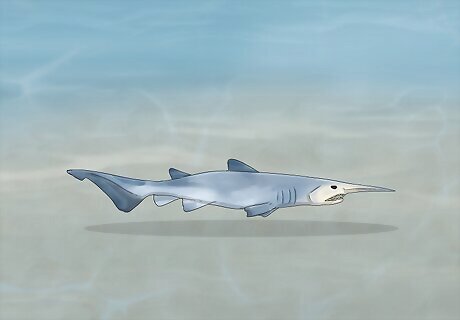
The goblin shark is a rare and mysterious deep-sea shark. Appearance-wise, it looks a little like an alien! This shark has a long, flat snout and jaws that can extend out when it needs to lunge at prey, which scientists believe they hunt by detecting changes in electric fields. They’re large, often between 10 - 13 ft (3 - 4 m) or bigger, though they’re rarely seen because they live at least 330 ft (100 m) deep in the ocean—usually deeper. Latin name: Mitsukurina owstoni Lives in: Deep water worldwide, usually near continental slopes and seamounts
Goosefish
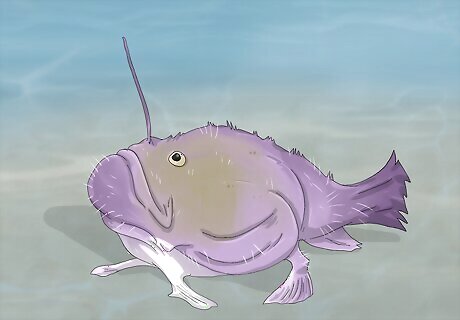
Goosefish are actually a type of anglerfish. In terms of appearance, though, they’re very distinct! They have flat heads, fleshy bodies, and giant mouths capable of gulping prey (fish or crustaceans, for example). They can also move (similar to “walking”) using their fins, which they can maneuver to use like feet so the goosefish can scuttle along the sandy ocean floor. Latin name: Lophiidae Lives in: Worldwide in all oceans except the Antarctic Ocean, usually more than 3,000 ft (910 m) deep
Gulper Eel
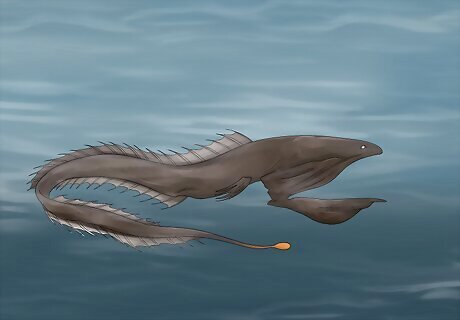
The gulper eel is known for its enormous, extending jaws. Gulper eels (or pelican eels) appear long and slim, but when they spot prey, they can open their hinged jaws—which extend backward from their heads! The eel’s mouth is wide enough to swallow fish larger than the eel itself—and, as a whole, the jaw is so big it’s roughly a quarter of the eel’s total length. Latin name: Eurypharynx pelecanoides Lives in: All oceans, specifically temperate and tropical areas
Harp Sponge
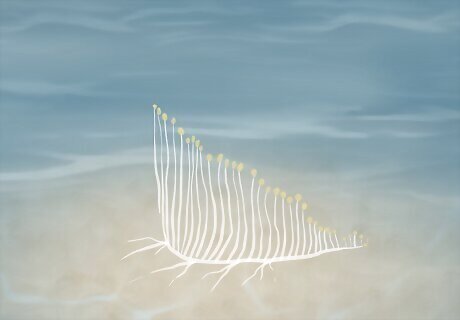
The harp sponge is a carnivorous sea sponge with a harp-like body. Harp sponges are also called “lyre sponges,” and they live by anchoring themselves to the sea floor while feeding on bacteria in the water—as well as larger prey, like crustaceans, that get caught in the harp sponge’s branches, which are covered in velcro-like “hooks.” Latin name: Chondrocladia lyra Lives in: Northeast Pacific Ocean, particularly off the coast of northern California Because the harp sponge doesn’t have a mouth, it “eats” prey by enveloping it in a membrane that breaks it down until the harp sponge can absorb it.
Hoff Crab
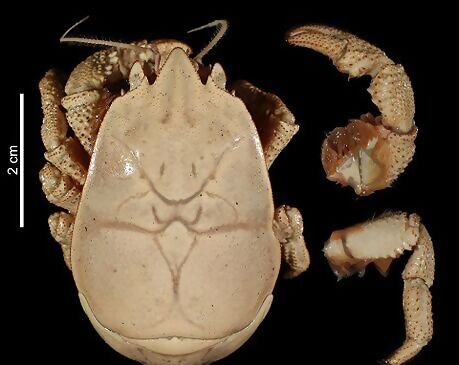
The hoff crab is notable for its squat body and furry chest. They’re sometimes called “yeti crabs” because their white bodies are covered in hair called “setae,” particularly around the chest area. These hairs have a function; they harvest bacteria from hydrothermal vents in the ocean, which the hoff crab can then feed on. These crabs grow to about 6 in (15 cm) long and can live in clusters around vents. Latin name: Kiwa tyleri Lives in: The Southern Ocean, around hydrothermal vents near Antarctica
Japanese Spider Crab
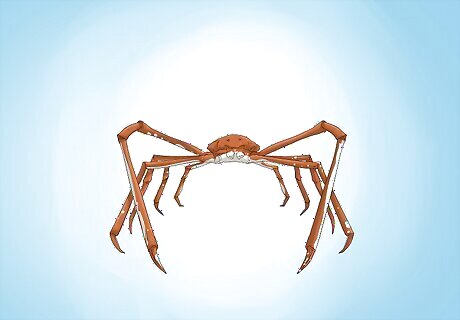
The Japanese spider crab has the largest leg span of any arthropod. Its impressive leg span can reach up to 12 ft (3.6 m) from claw to claw, hence its name “spider crab”—it looks a lot like a spider! It lives on the seafloor and scavenges for food, usually dead or decaying matter it can quickly get its claws on. Young crabs are also known to place kelp and sponges over themselves for camouflage. Latin name: Macrocheira kaempferi Lives in: Deep waters off the coast of Japan, particularly the island of Honshū.
Johnson’s Abyssal Seadevil
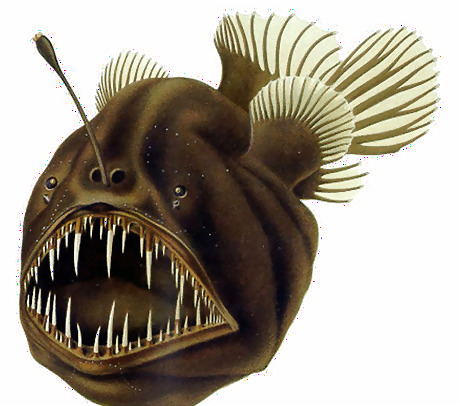
This fish is also called a humpback anglerfish. It’s a species of black seadevil—which, again, is a type of anglerfish. True to its colorful name, this “seadevil” looks pretty frightening; it has sharp teeth, a wide mouth, and a bioluminescent lure designed to draw prey closer in the dark waters. The abyssal seadevil’s stomach can also fit prey bigger than the fish itself! Latin name: Melanocetus johnsonii Lives in: Temperate and tropical ranges across all oceans
Pink See-Through Fantasia
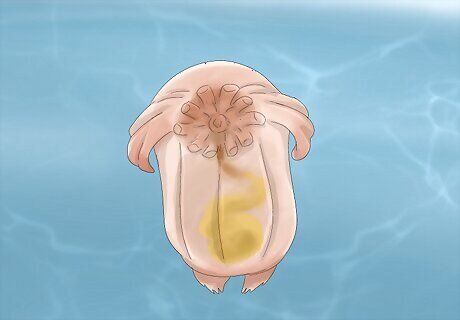
This sea cucumber has been dubbed the “headless chicken monster.” That’s because the pink see-through fantasia looks truly unique: it has a bulging body, ridged fins, and pinkish-purple transparent skin—meaning you can see its internal organs. These odd sea cucumbers float vertically, with umbrella-like brims that help them navigate, though they mainly search for food along the ocean floor. Latin name: Enypniastes eximia Lives in: In oceans worldwide, in different regions (first sighted near East Antarctica)
Polychaete Worm
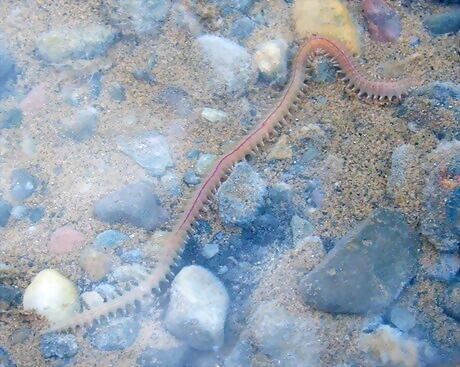
The polychaete is also called the “bristle worm.” Each segment of its long, thin body has a pair of bristle-covered parapodia, or fleshy protrusions—hence its name. Polychaete worms typically live around deep-sea hydrothermal vents, where the ocean’s temperature is exceptionally high—though other species in the family Nereididae can look quite different and live in diverse habitats! Latin name: Polychaeta Lives in: The deep Atlantic Ocean
Sea Angel
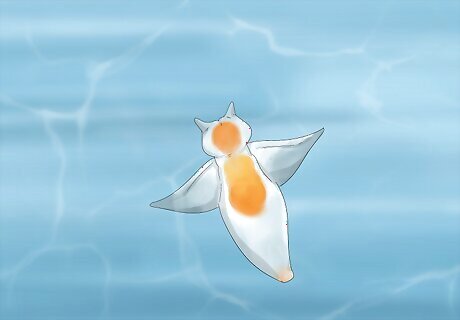
Sea angels are named for the wing-like appendages that help them swim. They’re a type of sea slug, or modified gastropod, with transparent bodies; even though they’re related to sea snails, they don’t have any shells. And, though they might be named after angels, these sea slugs know how to hunt for prey, using their tentacles to pull other snails clean out of their shells. Latin name: Gymnosomata Lives in: A wide range of ocean waters, from polar (under sea ice) to tropical
Sea Pig
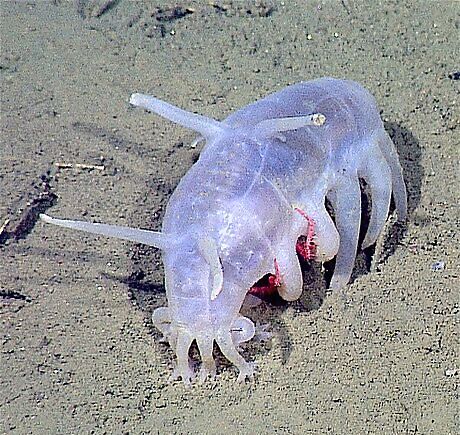
The sea pig is a strange, pinkish sea cucumber with a rounded body. It doesn’t actually look like a pig, but the comparison is understandable! They use tubular “legs” (that can inflate and deflate with water) to move around the sea floor and churn up the sand—which, in turn, helps sea pigs find plant and animal matter to eat. Sea pigs are especially deep-sea dwellers, living up to 5,000 m (3 miles) deep in the ocean. Latin name: Scotoplanes Lives in: Deep ocean bottoms in the Atlantic, Pacific, and Indian Oceans
Mariana Snailfish
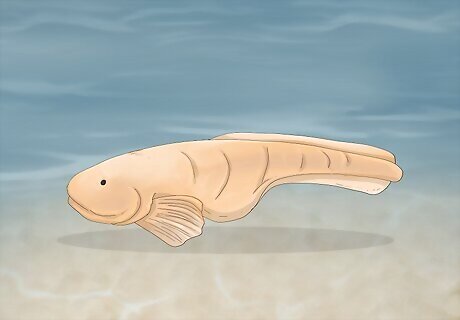
Snailfish live at incredible depths—even for deep-sea fish. These fish (unrelated to sea snails, despite their name) have been found at a whopping 27,000 ft (8,300 m) deep within the Mariana Trench—possibly the record depth for a seafloor-dwelling fish. They look like large tadpoles with pale coloring and ray-like fins and survive such depths because their gelatinous bodies don’t have swim bladders (which help other fish control buoyancy). Latin name: Pseudoliparis swirei Lives in: Deep waters of the Mariana Trench in the Pacific Ocean
Snipe Eel
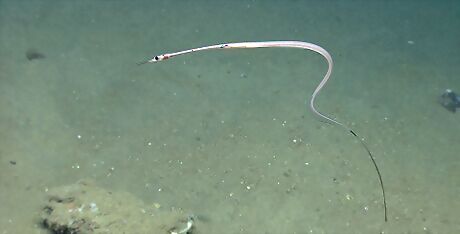
Snipe eels have distinct jaws and very slender bodies. “Snipe eel” is actually a family of eels with nine different species, but all have common (and strange-looking) traits—specifically, long, thin jaws that extend out and curve like beaks. They look similar to snipe birds, hence the eel’s name! They also have large eyes and tend to live quite deep in the ocean, between 980 - 2,000 ft (300 - 600 m). Latin name: Nemichthyidae (family) Lives in: Deep waters in all oceans worldwide
Squidworm
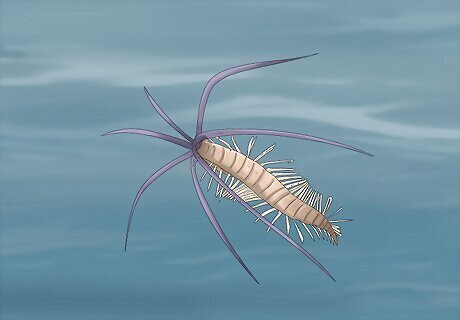
The squidworm is a marine worm first encountered in 2007. No, not Squidward, SpongeBob SquarePants’ grumpy coworker—squidworm, an eyeless marine worm so-named for the 10 appendages resembling tentacles that sprout from its head. The squidworm is eyeless, relying on its tentacles to collect organic debris that it can consume as food (and the 25 pairs of translucent, paddle-like appendages along its body to swim). Latin name: Teuthidodrilus samae Lives in: The deep sea; it was discovered in the Celebes Sea between Indonesia and the Philippines
Vampire Squid
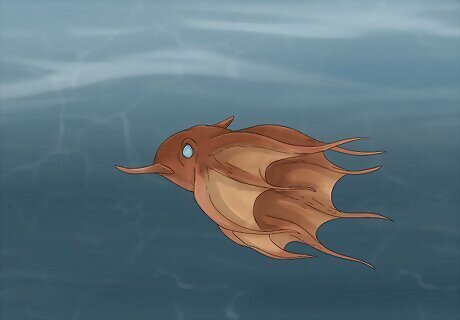
Despite its name, this creature is not a vampire or a squid. The vampire squid’s name comes from its appearance, including its dark, reddish black coloring, squid-like shape, and the webbing between its arms. Although related to the squid, the vampire squid is part of its own cephalopod genus (and don’t worry: it feeds on detritus, not blood). Latin name: Vampyroteuthis infernalis Lives in: Oceans worldwide, in temperate and tropical deep waters
Viperfish
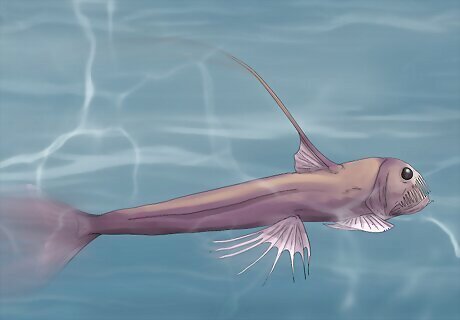
Viperfish come from the genus Chauliodus. That means there are many species of viperfish, each with needle-sharp teeth that form a cage (of sorts) to trap prey in and hinged lower jaws. Some viperfish also have photophores (for camouflage) and are bioluminescent. Interestingly, viperfish don’t have scales (even though they appear to). Instead, their bodies are coated in a thick, transparent substance. Latin name: Chauliodus (genus) Lives in: The tropical regions of all major oceans
















Comments
0 comment